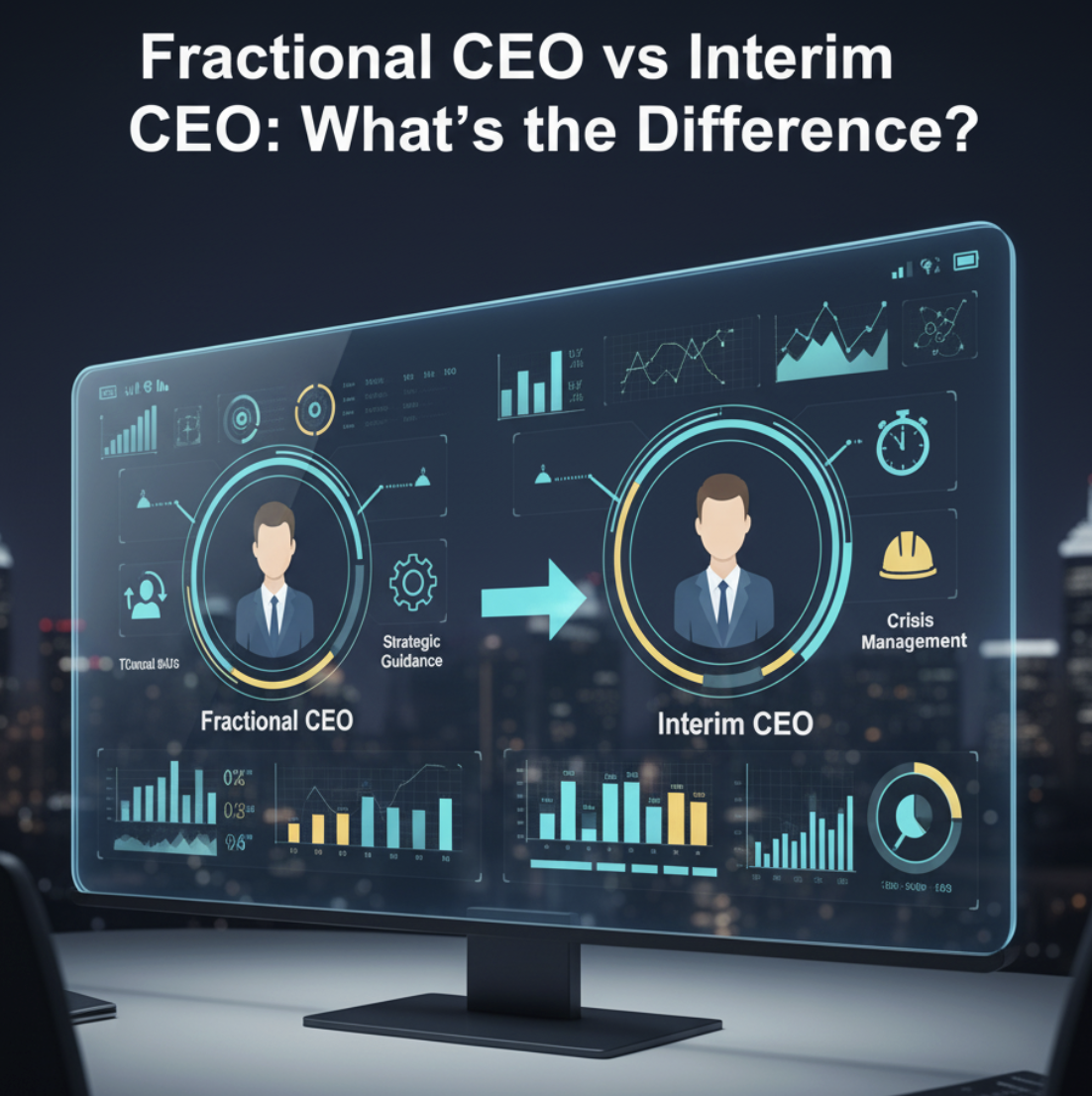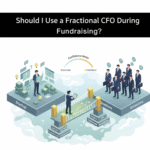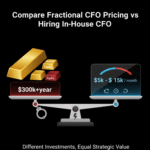Introduction: The CEO Dilemma for Growing Businesses
Every business reaches a point where leadership needs outpace the current team’s capacity. Whether you’re a startup scaling rapidly or an established company navigating a turnaround, bringing in top executive talent becomes critical. But here’s the challenge: hiring a full-time CEO is expensive, time-consuming, and often premature. That’s where the choice between a fractional CEO vs interim CEO comes into play.
At first glance, these roles sound similar—both provide executive leadership without a long-term, permanent hire. However, their applications, time commitments, and strategic focus are quite different. Understanding these differences can help you choose the right solution for your business stage and goals.
What Is a Fractional CEO?
A fractional CEO is an experienced executive who works with your company part-time, often just a few days a week or month. Rather than joining permanently, they integrate into your leadership team on a flexible basis, guiding strategy while allowing the business to remain lean.
When to Use a Fractional CEO:
- Scaling mode: Startups experiencing rapid growth but not ready for a full-time CEO.
- Specialized guidance: Companies needing expertise in areas like fundraising, go-to-market, or digital transformation.
- Budget-conscious firms: Businesses that want senior leadership without the full-time salary and benefits package.

Case Study Example:
A SaaS startup with $5M ARR engages a fractional CEO to professionalize operations, set up investor reporting, and refine its growth strategy before raising a Series B. Instead of paying a $400K+ salary, they spend ~$12K/month for high-level guidance.
What Is an Interim CEO?
An interim CEO is a temporary, full-time executive who steps in to bridge a leadership gap—often during a crisis, leadership transition, or turnaround. Unlike fractional leaders, interim CEOs usually commit full-time until a permanent CEO is hired or the situation stabilizes.
When to Use an Interim CEO:
- Sudden CEO departure: To maintain continuity and calm investor concerns.
- Crisis management: When companies face restructuring, declining revenue, or PR issues.
- Pre-hire stabilization: Preparing the ground for a permanent CEO by addressing urgent issues.
Case Study Example:
A family-owned manufacturing firm loses its long-time CEO unexpectedly. To stabilize operations, the board brings in an interim CEO with turnaround expertise. Within six months, the interim leader implements cost controls and restores profitability while the search for a permanent CEO continues.
Key Differences: Fractional CEO vs Interim CEO
| Factor | Fractional CEO | Interim CEO |
|---|---|---|
| Time Commitment | Part-time (flexible hours/days) | Full-time (temporary) |
| Focus | Long-term growth, scaling, and strategy | Crisis management, transition, or stabilization |
| Cost Structure | Monthly retainer ($8K–$20K typical) | Full-time salary equivalent (often pro-rated $250K–$400K/year) |
| Duration | Months to years, ongoing as needed | Typically 3–12 months |
| Best Fit | Scaling startups, lean companies | Companies in crisis or leadership transition |
Choosing the Right Fit
The decision between a fractional CEO vs interim CEO depends on your business context:
- If you need strategic scaling support without full-time costs → Choose a fractional CEO.
- If you’re facing crisis or leadership gaps → An interim CEO ensures continuity and stability.
- Some companies even use both—an interim CEO during a crisis followed by a fractional CEO for long-term guidance.
Leveraging AI for Smarter Executive Engagement
With the rise of AI-powered workflows, businesses can now streamline how they engage with executives. Tools like YourNextVenture’s Prompt Library or 90-Day Success Checklist help CEOs—fractional or interim—quickly align on strategy and execution.
For example:
- AI prompts can accelerate investor deck prep.
- Automated financial models support cash flow planning.
- Strategic frameworks save time in go-to-market planning.
By combining fractional executive expertise with AI-powered tools, companies gain agility and sharper decision-making.
FAQ: Fractional CEO vs Interim CEO
1. What’s the main difference between a fractional CEO and an interim CEO?
A fractional CEO works part-time, focusing on long-term growth, while an interim CEO serves full-time on a temporary basis to manage transitions or crises.
2. How much does a fractional CEO cost compared to an interim CEO?
Fractional CEOs often cost $8K–$20K/month, while interim CEOs can cost the equivalent of $250K–$400K annually (pro-rated).
3. Can a startup benefit more from a fractional or interim CEO?
Most startups benefit more from a fractional CEO, who can guide scaling and fundraising without the burden of a full-time salary.
4. Do interim CEOs also work with boards and investors?
Yes, interim CEOs often engage heavily with boards and investors to maintain confidence during leadership gaps.
5. Can a company transition from an interim CEO to a fractional CEO?
Absolutely. Many companies use an interim CEO during a crisis and later bring in a fractional CEO for long-term growth.
Conclusion: Find the Right Leader for Your Moment
Choosing between a fractional CEO vs interim CEO comes down to timing, goals, and resources. Both roles bring invaluable expertise, but their applications differ. Fractional CEOs shine in growth and scaling; interim CEOs excel in crisis and transition.
If your business is at a crossroads and you’re unsure which leader you need, NeoGig can help you connect with the right executive talent—on demand, on your terms. No hard commitments, just the right expertise at the right moment







